Astronomers have captured the first image of polarized light and the magnetic fields surrounding Sagittarius A* (Sgr A*), the supermassive black hole at the heart of the Milly Way.
The historic observation made with the Event Horizon Telescope (EHT) has revealed that the neatly arranged magnetic fields resemble those around the supermassive black hole at the heart of the galaxy M87. This is surprising considering that Sgr A* has a mass about 4.3 million times that of the Sun, but M87* is much more monstrous, with a mass equivalent to about 6.5 billion Suns.
The new EHT observation of Sgr A* therefore suggests that strong and well-organized magnetic fields may be common to all black holes. Because M87*’s magnetic fields drive powerful outflows or ‘jets’, the results indicate that Sgr A* may itself have a hidden and weak jet.
Related: James Webb Space Telescope discovers ‘extremely red’ supermassive black hole growing in early universe
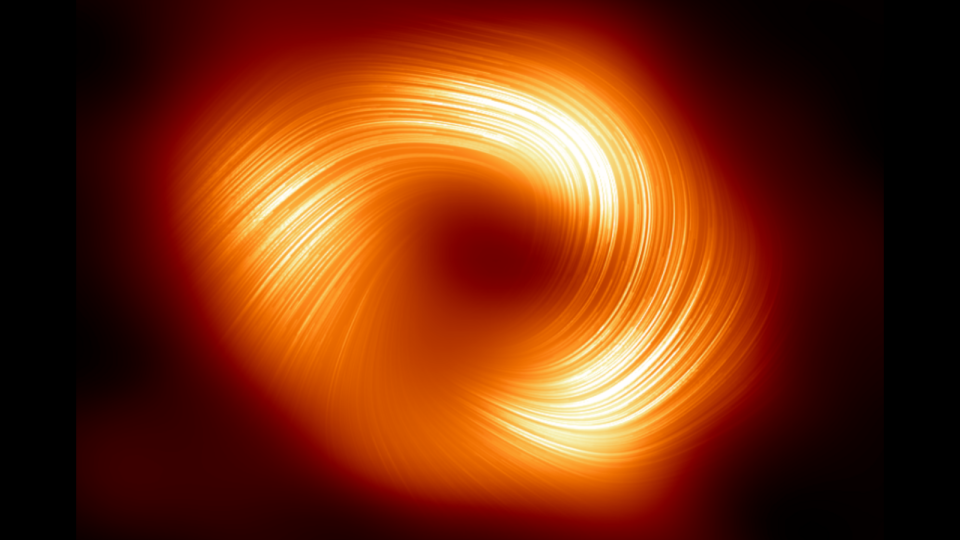

“This new image of the black hole at the center of our Milky Way, Sgr A*, tells us that there are strong, twisted, and ordered magnetic fields near the black hole,” said Sara Issaoun, co-leader of the study and NASA Hubble Fellowship Program. Einstein Fellow of Harvard & Smithsonian’s Center for Astrophysics (CfI) told Space.com: “We have believed for a while that magnetic fields play a key role in how black holes feed and eject matter in powerful jets.
‘This new image, together with a strikingly similar polarization structure seen in the much larger and more powerful black hole M87*, shows that strong and ordered magnetic fields are crucial for black holes’ interactions with the gas and matter around it.’
Comparison of the magnetism of two monstrous black holes
The EHT consists of many telescopes around the world, including the Atacama Large Millimeter/submillimeter Array (ALMA), which come together to form an Earth-sized telescope that is no stranger to making scientific history.
In 2017, the EHT captured the first image of a black hole and its surroundings, capturing M87* at a distance of about 53.5 million light-years from Earth. Two years after this image was revealed to the public in 2019, the EHT collaboration once again revealed the first look at polarized light around a black hole, M87*.
Polarization occurs when the orientation waves of light are directed at a certain angle. The magnetic fields generated by plasma moving around black holes polarize the light at a 90 degree angle to itself. This means that observing the polarization around M87* allowed scientists to ‘see’ the magnetic fields around a black hole for the first time.
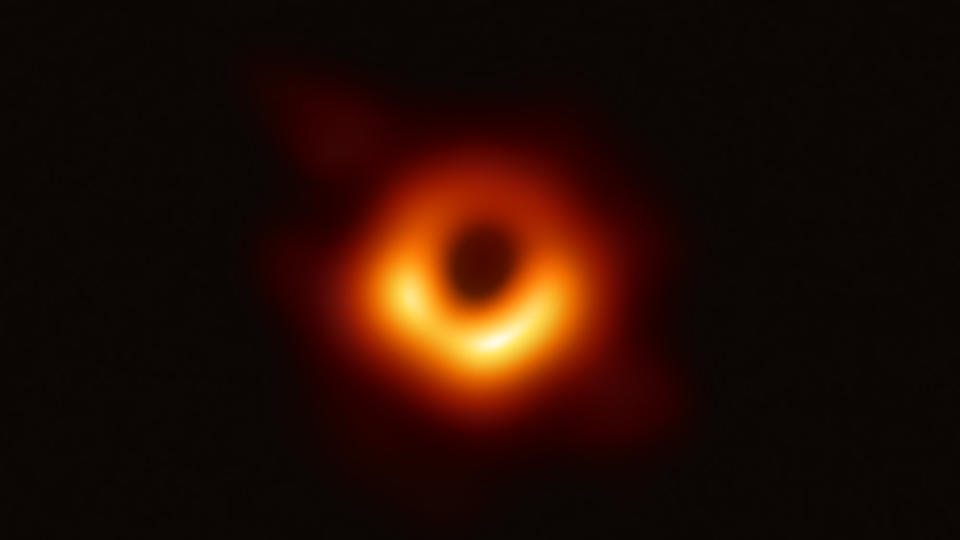

This was followed in 2022 by the revelation that the EHT had also imaged a supermassive black hole much closer to Earth just 27,000 light-years away, Sgr A*, the black hole around which the Milky Way is sculpted.
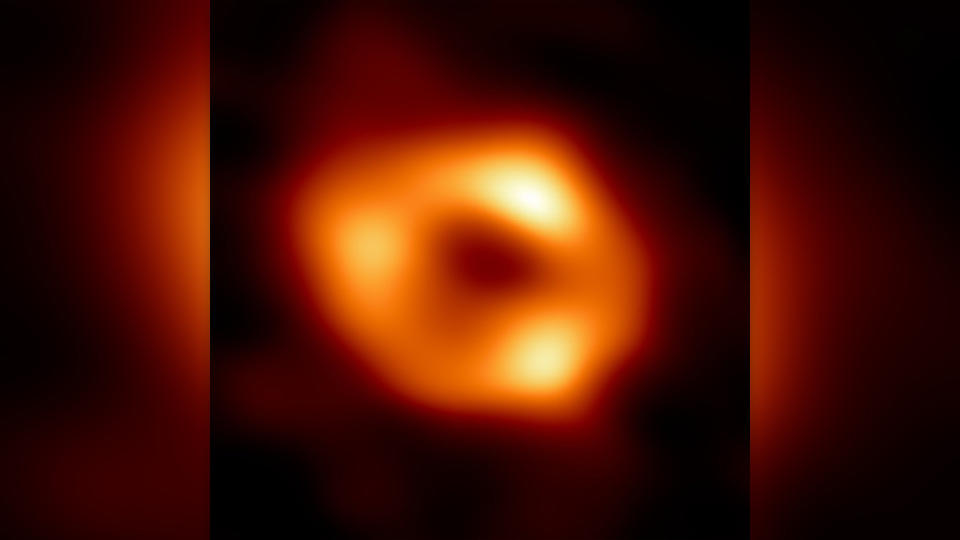

Now the EHT has finally given scientists a picture of polarized light and thus of the magnetic fields around this supermassive black hole.
“Polarized light is what teaches us about magnetic fields, the properties of the gas and mechanisms that occur as a black hole feeds,” Issaoun said. “Given the additional challenges of imaging Sgr A*, it is honestly surprising that we were able to get a polarization image at all!”
These challenges arose despite Sgr A* being closer to Earth, because the smaller size of the Milky Way’s supermassive black hole means that the material floating around it at near-light speeds is difficult to image. M87* is much larger, meaning that while the material is moving at more or less the same speed, it takes much longer to complete a circuit, making it easier for the EHT to capture.
Overcoming these difficulties means that a comparison can now be made between two black holes at opposite ends of the supermassive black hole spectrum, one with billions of times the mass of the Sun and another with a mass millions of times that of our star is. The first conclusion is that these magnetic fields are remarkably similar.
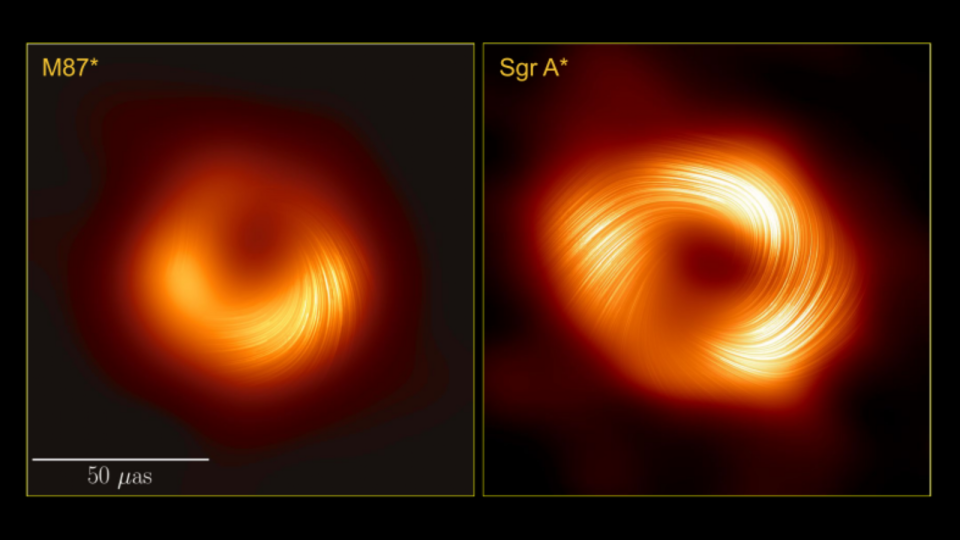

“This similarity was especially surprising because M87* and Sgr A* are very different black holes,” Issaoun said. “M87* is a very special black hole: it has a mass of 6 billion solar masses, lives in a gigantic elliptical galaxy and emits a powerful plasma jet that is visible at all wavelengths.
“Sgr A*, on the other hand, is very common: it has a mass of 4 million solar masses, lives in our regular spiral Milky Way Galaxy, and appears to have no jet at all.”
Issaoun explained that the team had expected to learn about the different properties of the magnetic fields of M87* and Sgr A* just by looking at the part of the light that is polarized.
“Perhaps one would be more ordered and strong, and the other more disordered and weak,” Issaoun added. “However, since they look the same again, it is now quite clear that these two different classes of black holes have very similar magnetic field geometry!”
The results suggest that a deeper investigation of Sgr A* may reveal previously undiscovered features.
Is the Milky Way’s supermassive black hole launching a hidden jet?
The polarization of light and the neat and strong magnetic fields of Sgr A*, and the fact that they are very similar to those of M87*, may indicate that our central black hole has been keeping a secret from us until now.
“We expect strong and orderly magnetic fields to be directly related to fighter jet launches, as we observed for M87*,” Issaoun explains. “Since Sgr A*, with no jet observed, appears to have a very similar geometry, perhaps there is also a jet lurking in Sgr A*, waiting to be observed, which would be super exciting!”
Astronomers weren’t very surprised when they didn’t see a Sgr A* jet. That’s because M87* is surrounded by so much gas and dust that it consumes the equivalent of two or three suns every year. That means enough material to channel the magnetic fields to the poles and shoot out as jets.
Sgr A*, on the other hand, uses so little matter that it is equivalent to a human eating one grain of rice every million years. These observations suggest that our dieting supermassive black hole may still have a jet; it’s just hard to see.
“There is a lot of evidence of possible outflows and even of jets powered by the black hole in the past, yet no jet has ever been imaged in Sgr A* due to the harsh environment of the galactic center,” Issaoun said. jet would be a major revelation about our black hole and link to its history within our Milky Way.”
She added that the process that launched these jets is the most energetic mechanism in the entire universe, dramatically affecting the heart of galaxies, for example by clearing away gas and dust needed for stars to form. and by influencing the way galaxies grow and evolve. That means the discovery of a jet emerging from Sgr A* would impact our understanding of how the Milky Way evolved and took the shape astronomers observe today.
“It’s so striking that such large-scale damage can be caused by such a small core in a galaxy, and it all starts at the edge of the central black hole, where these magnetic fields rule,” Issaoun continued.
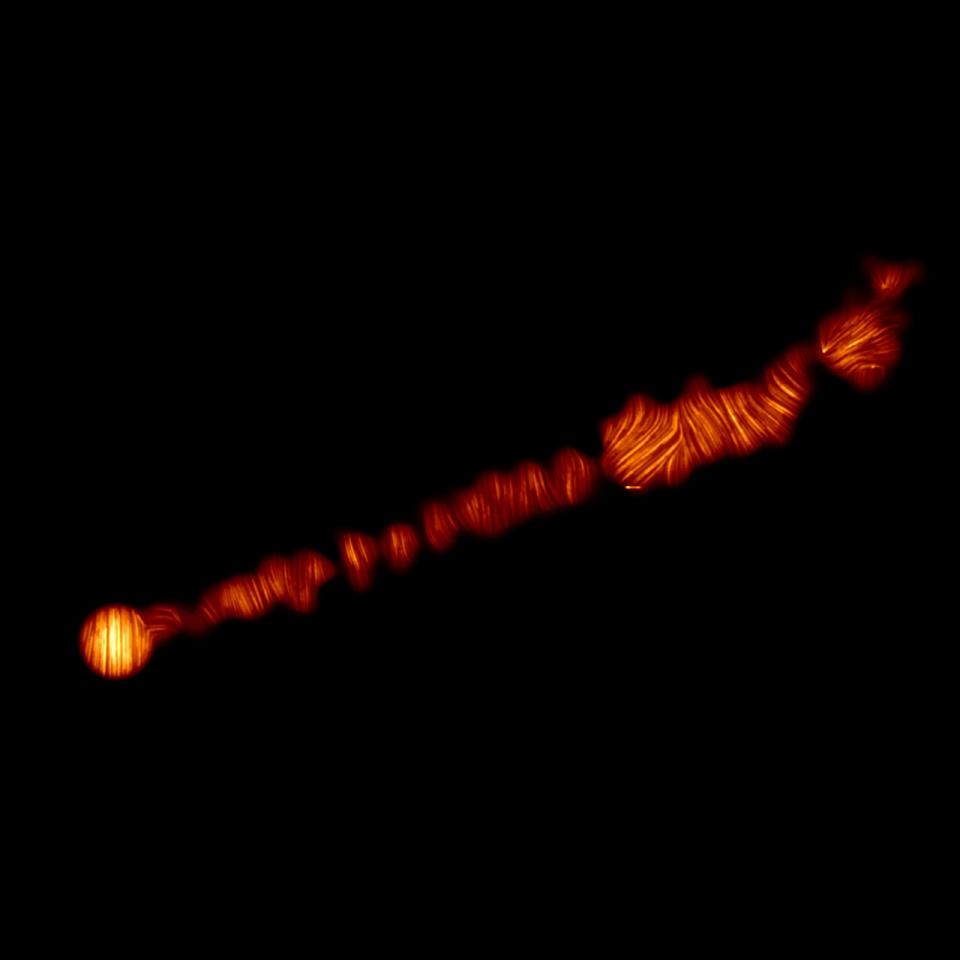

Issaoun said that with these two polarized images of very different black holes, scientists now have very compelling evidence that strong magnetic fields are ubiquitous to these cosmic titans.
“The next step,” she said, “involves figuring out how that geometry relates to how these systems move, evolve and flare.”
The EHT will launch its 2024 observing campaign in early April, with the collaboration hoping to obtain multicolor images of well-known black holes such as M87* and Sgr A* by observing them in different light frequencies.
“Over the next decade, the next-generation EHT effort aims to add more telescopes to fill out our virtual Earth-sized mirror and provide much more frequent observations,” Issaoun added. “With these extensions of the EHT we will be able to create polarized movies of black holes and directly observe the dynamics between the black hole M87* and its jet.”
related stories
– How do some black holes get so big? The James Webb Space Telescope may have an answer
– The brightest quasar ever seen is powered by a black hole that eats ‘a sun a day’
—Black hole-like “gravastars” can be stacked like Russian tea dolls
Additionally, the CFI researcher said the EHT could eventually get some space-based help in observing black holes and their dynamics. A proposed mission that could help with this is the Black Hole Explorer (BHEX) mission concept, which adds a single space telescope to the Earth-based EHT array.
“How much black holes rotate, their spin is believed to be directly related to why magnetic fields near the black hole look the way they do and how they can launch jets,” Issaoun concluded. “With BHEX we can image the sharp photon ring signature of black holes. This photon ring encodes properties of the spacetime around the black hole, including the black hole’s spin!”
The EHT team’s research was published Wednesday (March 27) in the Astrophysical Journal Letters.